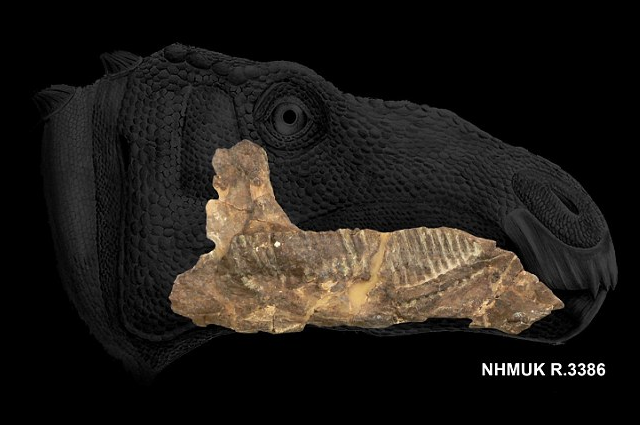First-Ever Fossil Record Facial Tumor Discovered in a Dinosaur
 |
| photo credit: University of Southampton. An adult Telmatosaurus (NHMUK R.3386) |
Scientists diagnose a 69 million-year-old dwarf duck-billed dinosaur from Transylvania.
For the first time, evidence of a facial tumor has been discovered in a fossil. That fossil was a jaw belonging to one Telmatosaurus transsylvanicus ? a type of primitive duck-billed dinosaur known as a hadrosaur.
Estimated to be 69-67 million years old, the hadrosaur fossil was discovered in the aptly named Valley of the Dinosaurs in Transylvania, western Romania.
“It was obvious that the fossil was deformed when it was found more than a decade ago but what caused the outgrowth remained unclear until now,” says Zolt?n Csiki-Sava of the University of Bucharest, Romania, leader of the field trip that uncovered the fossil and co-author of the new study published in the journal Scientific Reports, in a press release.
The research team used a micro-CT scanner to peer inside of the peculiar jawbone. Analysis of the scans suggested that the dinosaur suffered from ameloblastoma, a tumorous, benign, non-cancerous growth that affects the jaws of humans, other mammals, and a few modern reptiles. It had never before been encountered in a fossil.
“This discovery is the first ever described in the fossil record and the first to be thoroughly documented in a dwarf dinosaur,? says study co-author Kate Acheson from the University of Southampton. Palaeontologists have suspected that duck-billed dinosaurs were more prone to tumors than other dinosaurs, she explains, and the finding of this deformity so early on in duck-billed dinosaur evolution bolsters the idea.
The precise cause of death of the hadrosaur could not be determined, as its remains consisted of only the two lower jaws. However, the researchers ascertained from its size that this dinosaur died before it reached adulthood, leaving open the possibility that the ameloblastoma could have contributed to its untimely death.
“We know from modern examples that predators often attack a member of the herd that looks a little different or is even slightly disabled by a disease,? said Csiki-Sava. ?The tumour in this dinosaur had not developed to its full extent at the moment it died, but it could have indirectly contributed to its early demise.”
Published in the journal Scientific Reports